These are the future predictions that came true that were made in the past. Technology advances in an impressive way, what today is the most advanced and innovative in a few years becomes obsolete, and let alone in a few years, in a few months in the case of some devices. Being within these topics every day, perhaps we can forget how this evolution has been, or else, lose the capacity for astonishment, therefore things that speak of the future tend to excite us, even if they are prototypes or ideas, since it makes us imagine what life will be like in a few years.
But these predictions are not something exclusive to these days, what’s more, now this has been left a bit, since several years ago it was a common practice where it used to be imagined with machines, robots, holograms … come on, with technology that would arrive to make life easier for human beings. All this had its explosion at the beginning of the 20th century, where the sights were set on the next century and where the most radical change of all was supposed to arrive.
This became a kind of genus on its own, something that is known as Paleofuturo. From here, columns arose in newspapers, magazines and specialized publications, where all were dedicated to predicting what our life would be like in the future thanks to technology. And now, we have decided to travel back in time and do a review of those magnificent publications, seeing how we were supposed to live today. Below is the list of future predictions that came true and common today.
1899 – The dream of flying
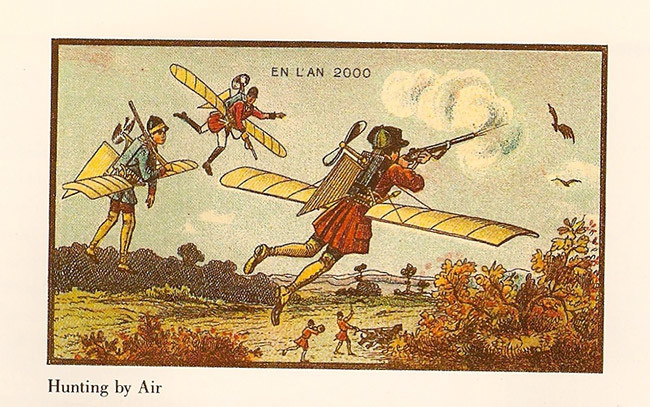
At the end of the 19th century, the French artist Jean-Marc Côté imagined what the year 2000 would be like, this through a series of postcards that can be found in the National Library of France. In them Côté embodied a futuristic vision where man could fly, was able to play several instruments at the same time, and animal husbandry and farms were operated by machines.
1990 – There will be no cars in big cities

That is what John Elfreth Watkings proposed in an article published in ‘The Ladie’s Home Journal’, which was published between 1889 and 1907. The desk stated that there would be no cars in large cities, but that they would only circulate through tunnels, well lit and ventilated, or above cities. The reality is different: so far this year more than 6 million cars have been manufactured.
1990 – Trains running at 241 km / h

In the same article, John Elfreth Watkings affirmed that in the year 2,000 there would be trains capable of moving at 241 km / h. Well, not exactly in the year 2,000, but China and trains prototypes capable of circulating at 620 km / h. If in the previous prediction sinned from optimist, this time you could say that it has been short.
1910 – Cinema by correspondence

Continuing with the French postcards, by 1910 they began to become popular as it was a fun way to imagine the future in 2000, important advances were still shown, such as automatic machines in hairdressers, flying police (because someone had to control air traffic ), but without a doubt the most interesting is that the one we have above these lines, which presents us with a cinema system through correspondence and yes, it is in color and with integrated audio.
1910 – Ciudades techadas

Another most peculiar postcard is the one that predicts a completely roofed city to avoid rains, storms, etc. The postcard lets see a square with a plate placed just on which, apparently, there is a kind of crystals that would let out the sunlight. It does not seem too practical, of course.
1910 – Our own personal plane
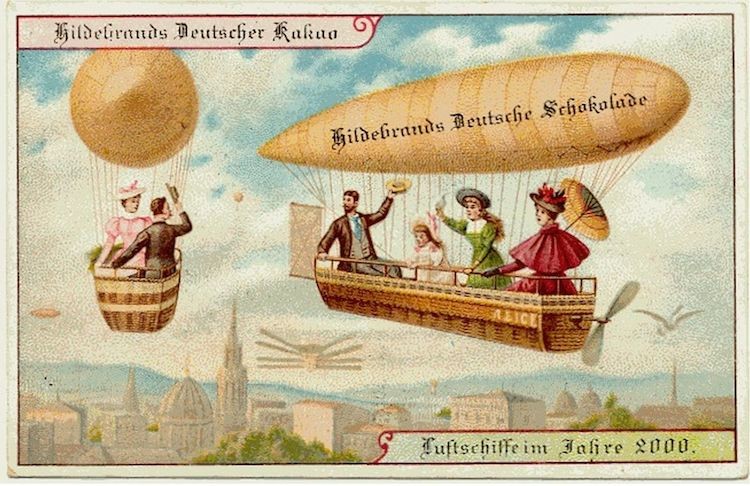
In recent months we have assisted the launch of different prototypes of personal air vehicles, although these projects still have their way to go. But already by 1910, it was intuited that mobility would go through these defeats. Not with an airplane, of course, but with a personal Zeppelin where three people would fit.
1910 – Flying Wallets
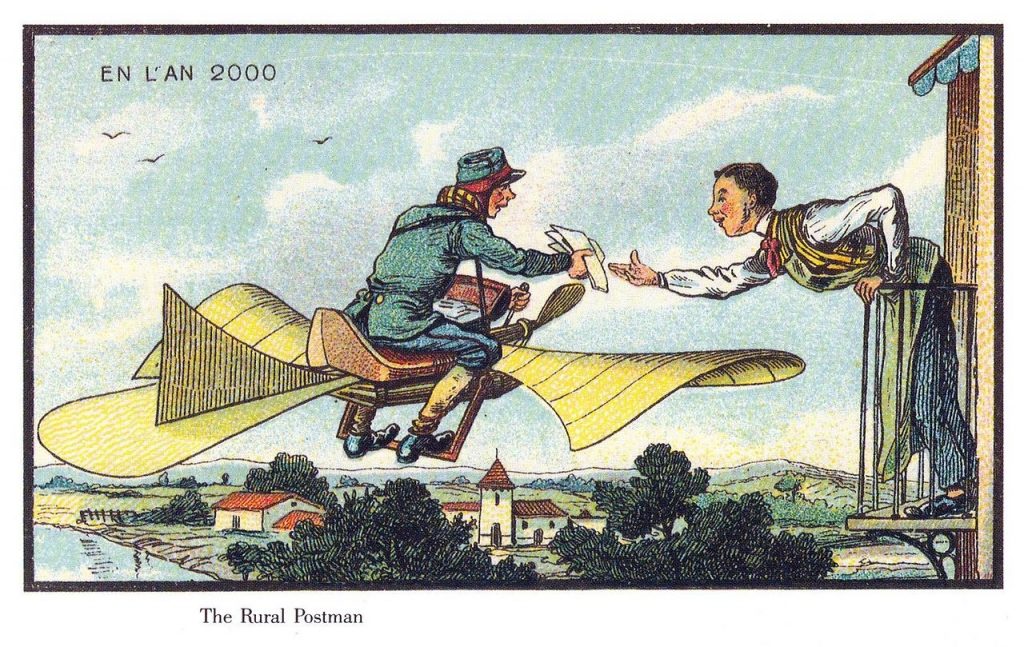
Postcards have given a lot of itself. In 1910, it was thought that in the year 2,000 portfolios would give us the letters mounted on a kind of personal flying frame that irremediably remembers the plane of the Wright brothers. The reality is that, nowadays, the paper cards have been relegated to the background, although we are already beginning to see the first autonomous drones, distributing packets.
1910 – Radio chimneys
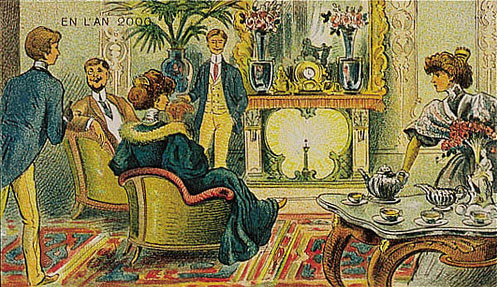
We all like to be warm in winter and enjoy a fireplace that does not stop sparkling, but already by 1910, people thought we would use radio chimneys. As an idea, it has its fringes, not for nothing, but because it is a million times more radioactive than uranium.
1912 – Video chats

Even though the first demonstration of a video call did not reach 1964 thanks to AT & T, that was not an obstacle for 1911, Hugo Gernsback, editor of the magazine ‘Modern Electrics’, imagine a device named “Telephot This edition, despite being written in November 1911, was published until February 1912.
1916 -The electric war tank

In the first World War, the publications were dedicated to predicting how weapons of the future would be. In this example, we have the cover of the magazine The Electrical Experénter, which shows a tank that uses a rotary system to move, but the most important thing is that it was electric, in order to not depend on fuels and may suffer accidents due to explosions.
1932 – Robots and smart houses

This image published in December 1932 in the San Antonio Light newspaper, shows as a person from the bed can control several aspects of your life, from seeing your wife doing shopping, up to a butler robot that brings her clothes of the day.
1943 – The videotaphone
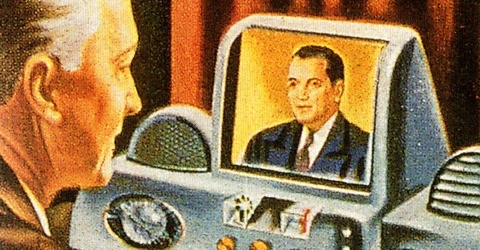
The Canadian company Seagram Company showed in an advertising announcement, as they did global business, for this they presented the use of the videotame, of which there was never a record that they would use it, but nevertheless it was very attractive as certain companies used advertising, showing
1945 – Wireless connections
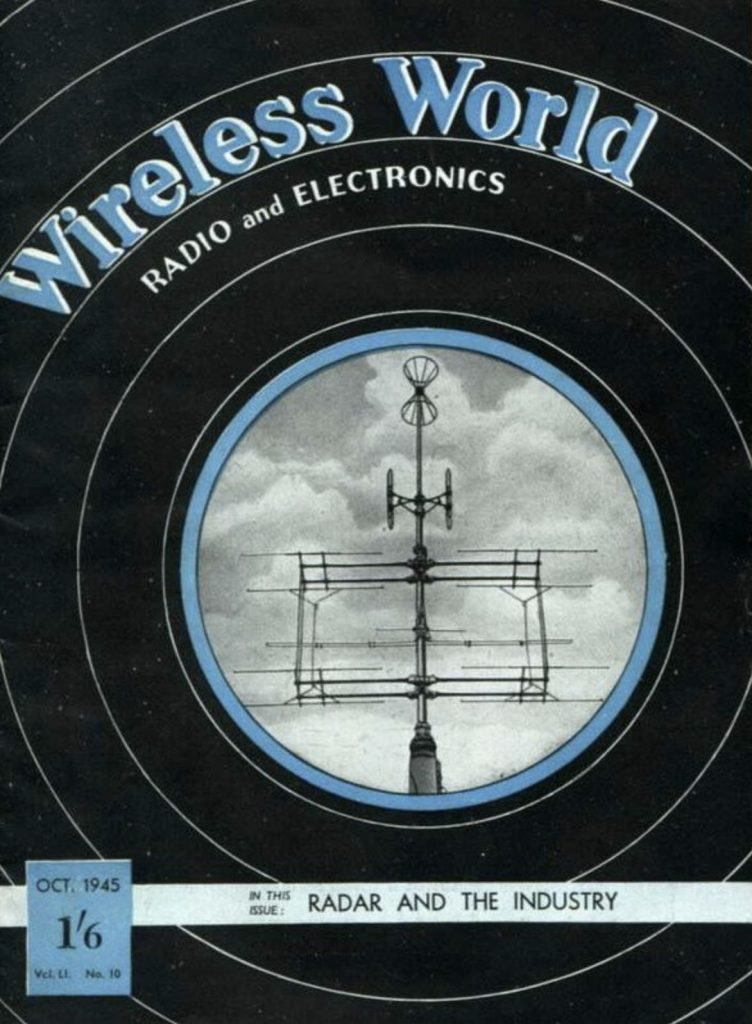
In 1945 the television signal was not yet used for commercial transmissions, only some countries and some chains, such as BBC, had that privilege. Reinasted the use of radio and communications were limited, despite this, Wireless World magazine already imagined a world full of satellites, which would be able to communicate intercontinently and with live transmissions to the whole world
1950 – The grandfather of the smartphone or smartwatch?
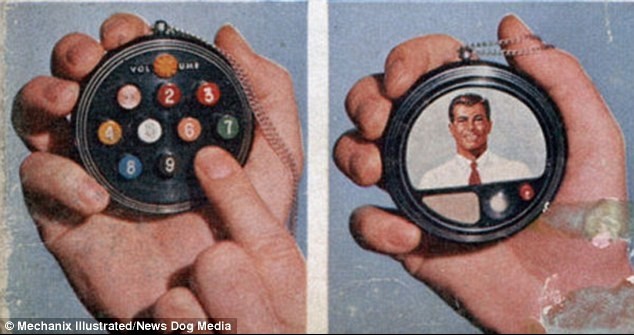
At the beginning of the 1950s, the Magazine Mechanix Illustrated showed a prototype created in the United States of a mobile phone with a screen, yes, the obsession to see with whom we spoke was present for many years. Simply nicknamed “the phone of the future” presented a circular design, on the one hand we had physical buttons to mark, while on the other a full color screen, in addition to that it could be operated by voice and even had an antenna to receive the television signal.
1953 – The cities of the future
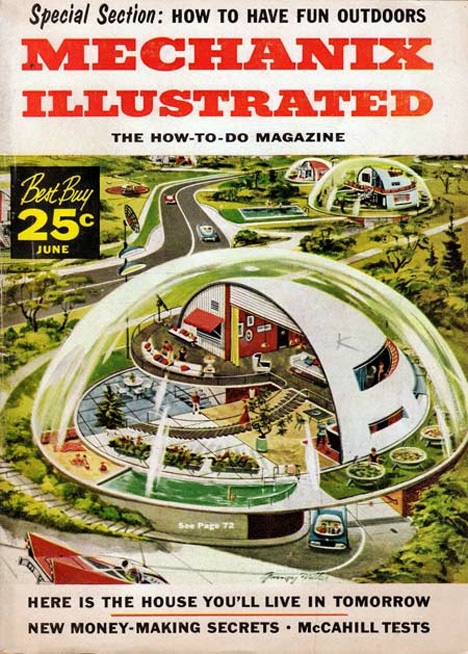
These images are incredible (and personal favorites), in them we can see a vision of what life would be like in the 21st century. Life in suburbs would be in neighborhoods full of domes, the houses would cease to exist and we would have our own ecosystem, where we could choose the temperature and way of life. But the cover of the special edition of ‘Future Cities’ is memorable, in it imagine colonies in space, houses with solar panels, televisions on a bracelet, come on, true visionaries.
1957 – Calls face to face
I have already mentioned it, in the past there was a strange fixation by video calls and in this March announcement of 1957, published in the Journal Scientific American, the company Hughes, famous today for the development of broadband satellites, advertisements Finally the product was not released due to its high costs, besides that a complex infrastructure was needed.
1958 – The car promoting solar energy

In the golden age of the American engine industry, Chrysler, through his vice president James C. Zeder, launched an important prediction of how cars would be. These would be driven by a solar system that would supply a battery by means of silicon converters. The Sunray Sedan from Chrysler, from which there was only one sketch, would be the bet of the manufacturer, who claimed that they were already locked in him and he would see light in the next years. We are not so far from getting it.
1958 – Distance education
Arthur Radebaugh, famous futuristic illustrator, published a 1958 Sunday of his vision of how the classrooms of the future would be. Teachers should no longer worry about attending schools, they could teach several groups at the same time from a remote location, each student would have at your reach a device with camera, screen and keyboard to participate and ask questions. All this arose thanks to an interview with Dr. Simon Ramo, professor at the California Institute of Technology. Covid-19 has forced this although it has not come out as well as we expected.
1959 – La Casa Solar
The idea of the houses that made use of solar energy were very popular in the second half of the 20th century. This illustration that appeared in the Toronto Star Weekly newspaper, showed how the houses would work through solar energy, but eye, solar energy only served as heating in times of cold.
1963 – Gadgets connected to the TV

The television was the device par excellence, so many of the forecasts were around it. In this edition of the Popular Science magazine, it was seen how external devices would be connected to the TV to interact with what was on the screen. Come on, a kind of antecedent to videogame consoles.
1968 – The phone already had television and video calls (again)
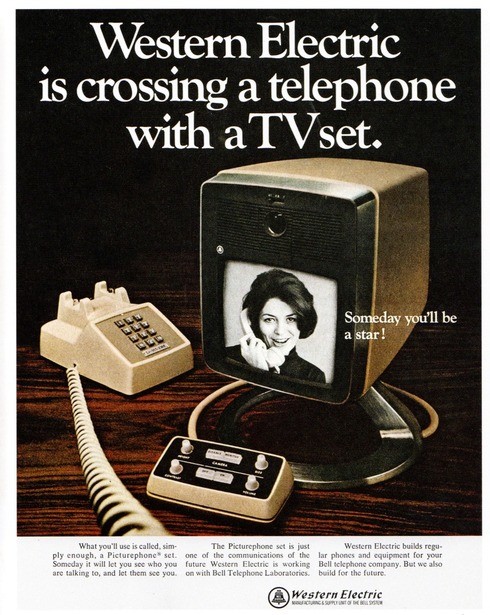
The Western Electric company developed together with Bell Telephone Laboratories the “Picturephone set”, a device that was connected to telephones (Bell only) and allowed to watch television by means of a wired remote control, but its innovation was that the monitor (in white and black) had a camera to be able to make video calls. Their price was very high for the time and they only managed to sell the first production line, in addition to never specifying that two devices were needed to make video calls, so they received a good amount of demands, yes, people came to think that with a single device they could see the other person.
1965 and 1970 – The television
The popular magazine Science, a reference at that time, bet on important advances in the field of televisions. In 1965 they assured that they would decrease their size considerably to become laptops, while for 1970, they predicted an explosion of multi-screen systems, which would allow us to “see” several programs at the same time.
1879 – The first Internet prediction
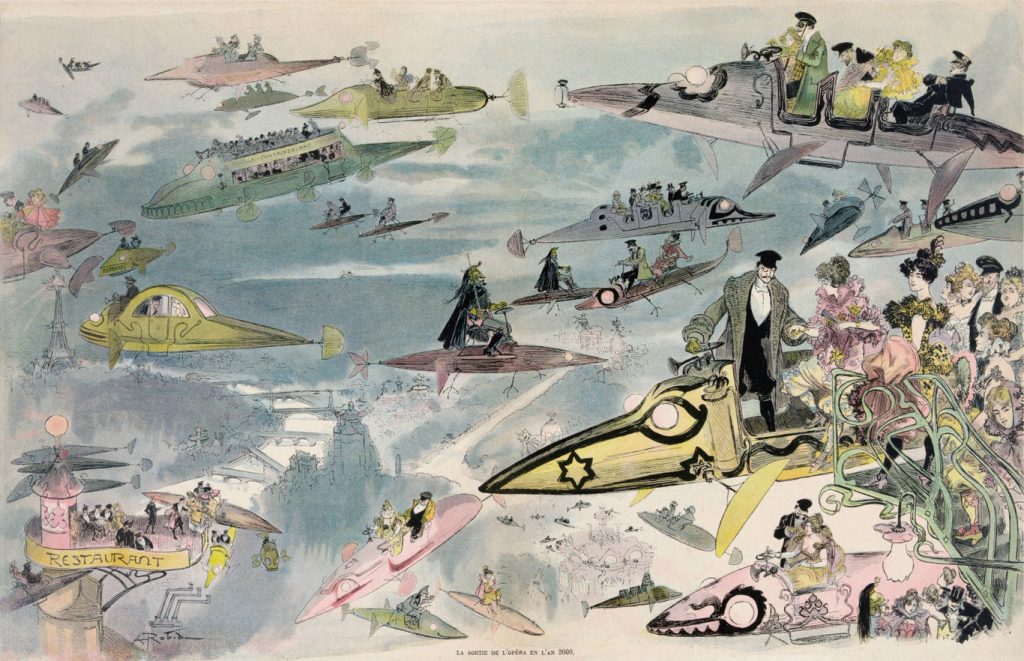
Edward Page Mitchell wrote in 1879 ‘The Senator’s Daughter‘, a story that was developed in 1937, where it was just talking about how the Senator’s daughter imagined the future of world politics. In this story we talk about a fantastic technology that allows you to read news from anywhere in the world, which is based on a strip of infinitive printed paper that provides all kinds of news about real-time events, a kind of Twitter or social network with permanent connection.
1984 – Cities in Domos

In the middle of Cold War, The Billings Gazette, a publication of Montana, the United States, published predictions of what the future would be like when we arrived at the year 2020. It highlights the idea of living in cities covered by domes, which have their own A idea rather motivated by the supposed danger of a nuclear war.
1960 – Flying Hospitals

Urgent medical care was a problem in the United States towards the end of the 1950s. It is as well as a weekly strip of name ‘Closer Than We Think‘ imagined the arrival of flying hospitals, which would be able to provide medical care in An idea that today does not sound as crazy to see, for example, the UNICEF project about it.
1904 – Flying machines
In 1904, the Minneapolis Journal newspaper premiered a section called ‘Junior Junior’, which was dedicated to showing predictions of what would happen in 1919 and 2019, most of them created by children and adolescents. The first of them was to imagine that for 1919 we could all fly through a personal machine, which would allow us to travel anywhere in a simple way. This idea arose after the first successful flight of the Christians Wright of 1903.
1904 – Electric broom

Today we have robots that vacuum and scrub our houses, but in 1904 they believed that before the end of the century they would see electric and almost automatic brooms, which would still depend on a person to give them direction and tell them where they had to clean. We currently have the blessed robot vacuum cleaners.
1968 – Underwater cities
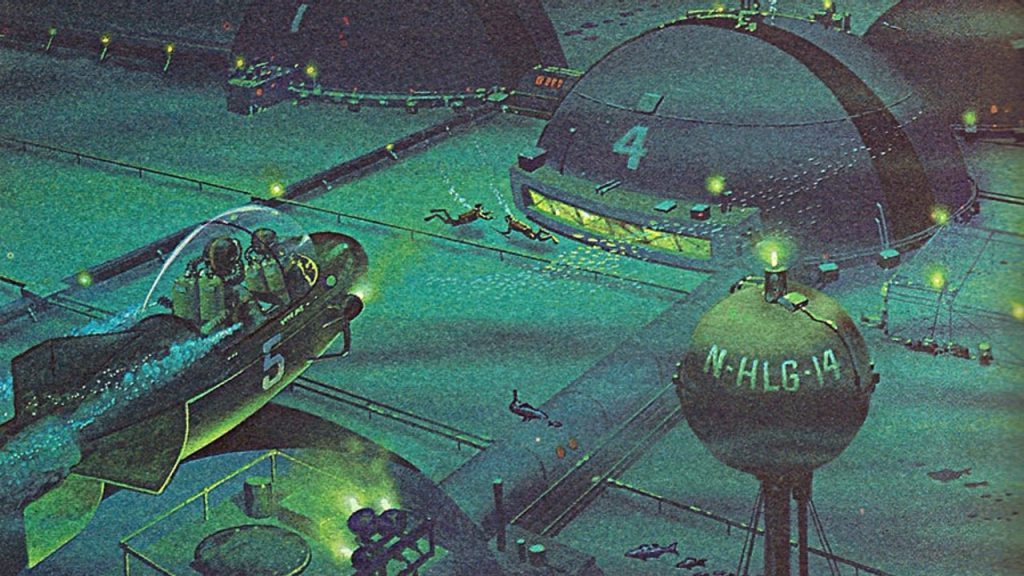
The book ‘Explorers of the Deep: Man’s Future Beneath The Sea’ of 1968, explored the possibilities that the human being lived in the oceans after creating buildings and structures that would allow us to live underwater. Again it is an idea driven by fear of war and the increase in polluting indications that began to be present at the end of the 1960s.
1958 – Flying patrols
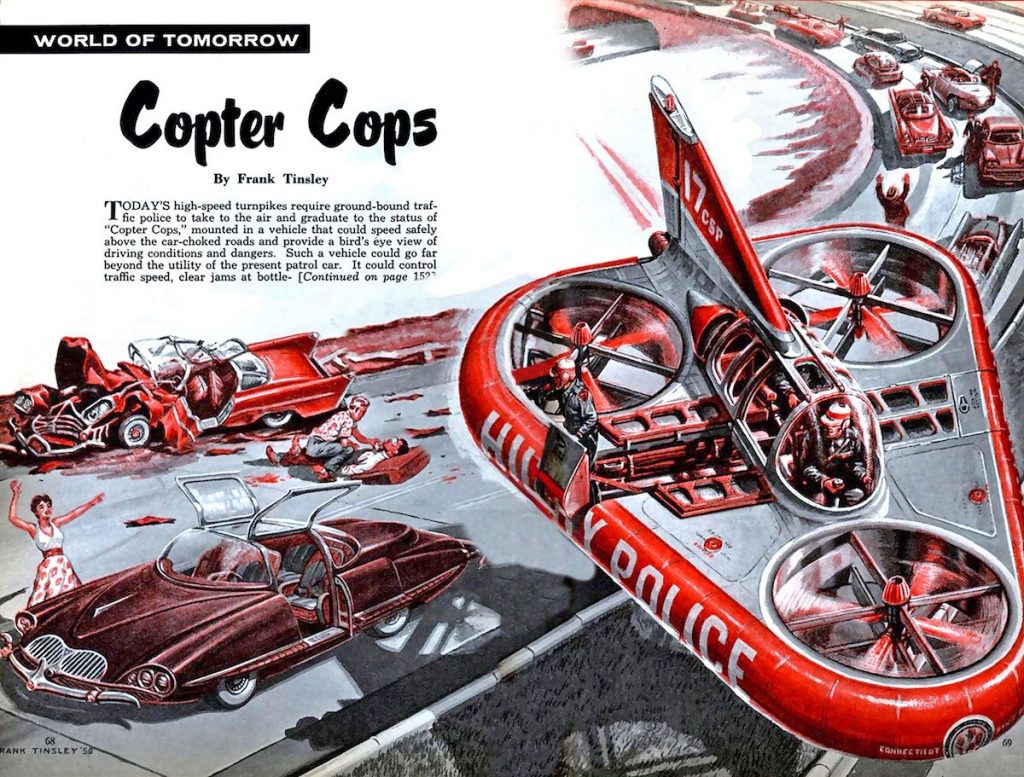
The idea of flying cars has been present in our life for several decades ago, and in 1958 Modern Mechanix magazine offered the first brushstrokes of how the future of security could be imagined through police on board of flying patrols. Seeing the image well, they were not that far from what today has been raised in this field, where you have an aspect of giant drones rather than flying car.
1945 – The house of the future would be an all-in-one
This video is a jewel, in it we can see American military spread showing how the houses of the future, all-inclusive predesigned structures, which could be moved from one place to another and would even have WAFLEA and up to roasting chickens Of course, in the video they warn that the houses were on an experimental stage, so the design and final performance could be different from the shown.
1939 – Personal Television
Yes, it looks like a virtual reality helmet, but it’s really about something they baptized as ‘monocle of television’, which would allow watching television personally and without interruptions. It is a concept that is born in England by the company Gramophone Co., and that would be resumed by Radio-Craft magazine in 1939. This device would allow an image of 1.5 x 1 inch thanks to two mirrors placed inside it to 4.
1958 – Taxis with huge capacities
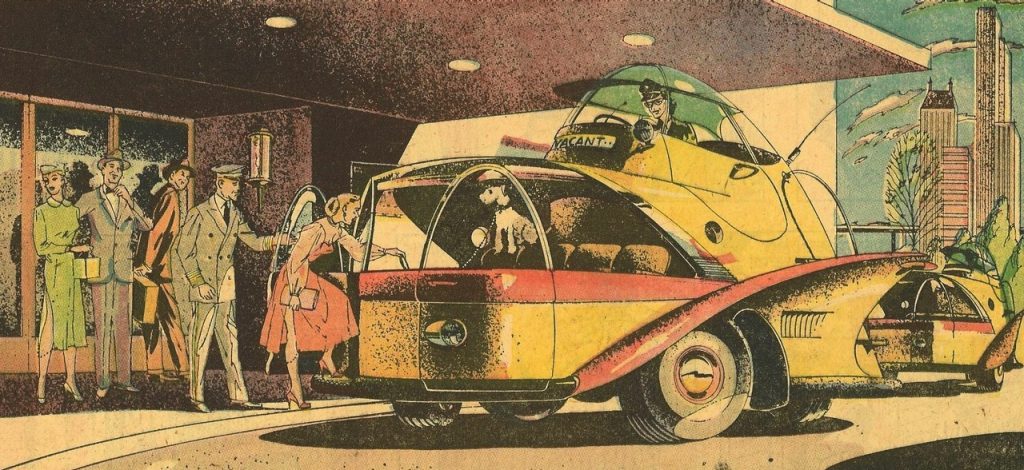
Again a fun prediction of ‘Closer Than We Think’, which in 1958 imagined how the taxis of the future would be. The idea showed us a vehicle with capacity for more than 20 passengers, pets included, where you would also include televisions and luxury. In this case, the driver would be in a kind of independent cabin at the top.
1987 – Holidays on the Moon for 2018
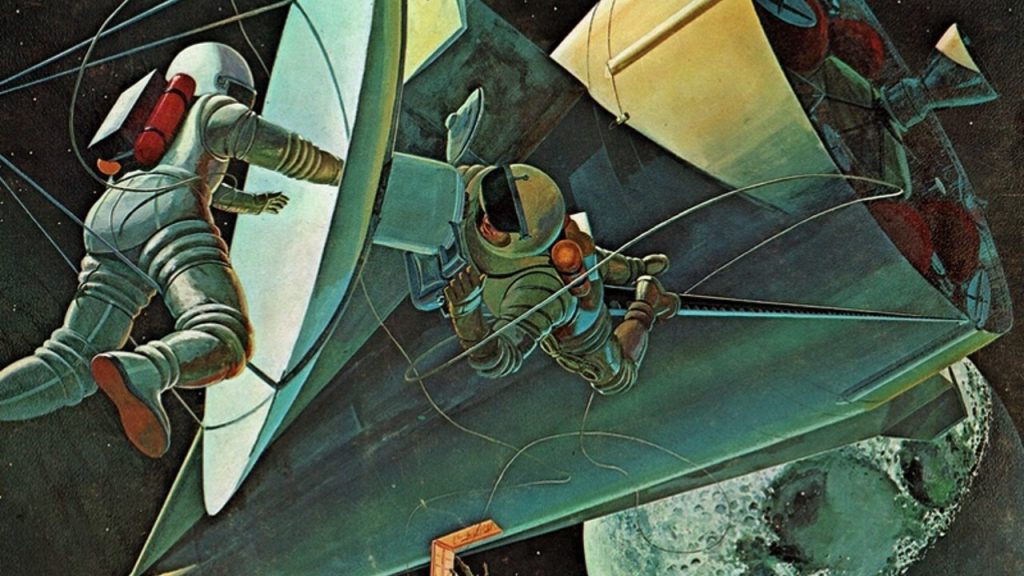
The Sociologist Daniel Bell wrote in 1987 an interesting article that was forecasts of what we would see in 2018. Although he was hit on some topics, such as nanotechnology and population growth, Bell claimed that there would be spatial trips that would allow us Something that evidently is not yet fulfilled, although it seems that we are not far away.